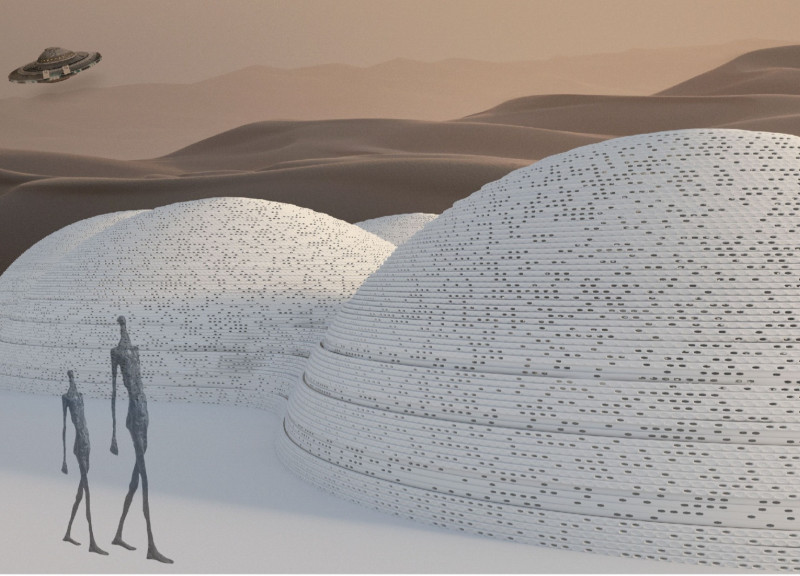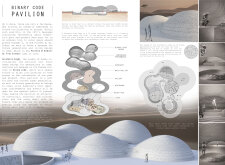5 key facts about this project
The Binary Code Pavilion in Egypt represents an innovative architectural exploration that fuses design with a conceptual narrative. Positioned in a context rich with historical significance, this pavilion serves as both an educational hub and a cultural artifact. Its primary function encompasses versatile spaces that include workshops, galleries, restrooms, a reception area, and outdoor performance zones. This structure provides a platform for community engagement and celebrates the advancement of human communication through the language of binary code.
The use of organic, undulating forms is a defining characteristic of the pavilion’s architectural design. These curves are not arbitrary; they are carefully crafted to reflect the surrounding desert landscape, creating a sense of continuity between the built environment and nature. Moreover, they guide visitors smoothly through the space, enhancing the user experience while embodying the project's overarching theme of connection and legacy.
Unique Design Approach and Materiality
A distinguishing feature of the Binary Code Pavilion is its integration of binary code into its physical structure. The facade utilizes hollow and solid blocks, resembling soda cans, symbolizing the binary states of 1 and 0. This choice of material not only conveys a message of communication but also fosters a tactile interaction with the building. The outer skin effectively engages visitors by translating complex ideas into accessible and visually engaging formats.
The choice of concrete as the primary construction material ensures durability while allowing intricate detailing that links the building to technological and cultural themes. The varying textures on the surface mirror those found in the environment, reinforcing the design's relationship with its desert context. The pavilion's architecture also anticipates climate considerations, ensuring resilience against harsh environmental conditions.
Functionality and Spatial Organization
The Binary Code Pavilion features a well-planned spatial organization that prioritizes functionality. The structure accommodates multiple user groups efficiently, offering designated areas for workshops and gatherings. The inclusion of a substantial 40-meter ramp and 14-step staircase provides inclusive access to all levels of the pavilion. This approach not only safeguards the user experience but also reinforces the project's commitment to accessibility and openness.
The careful arrangement of spaces encourages interaction and collaboration, crucial for educational purposes. Each area is designed to evoke curiosity, promoting exploration and discovery among visitors. By merging diverse functions within a cohesive design, the Binary Code Pavilion dedicates itself to the preservation and dissemination of knowledge through architecture.
For further insights into the architectural plans, architectural sections, architectural designs, and architectural ideas behind the Binary Code Pavilion, readers are encouraged to explore the project presentation. The integration of innovative design with a meaningful conceptual framework offers a profound example of contemporary architecture in a historically rich context.























